The Everglades region in southern Florida is a place we’ve always wanted to visit. The nature and ecosystem of the southern tip of the Florida peninsula is so unique and important that most of the land area down there is protected by two national parks and a national preserve. We spent four nights in the area and were able to explore all three.
Everglades National Park
Campground
Our home during our stay was at the Long Pine Key campground in Everglades National Park. There is also another campground at Flamingo, at the southernmost tip of the park. Long Pine Key is first-come, first-served (meaning they don’t take reservations) and costs $20 per night. There are no hook-ups for water, electric, or sewer, though water is available and there is a dump station to empty tanks. Staffan had recently installed the wiring needed to hook up our new solar panel, so we were ready to try spending four nights without shore power. By simply being aware and a little conservative with our electricity usage, we were just fine.
Anhinga Trail by Day
Of all the things we saw and did in Everglades National Park, the Anhinga Trail was our favorite. We drove through the park from the Long Pine Key area to the Flamingo visitor center and stopped to explore a variety of trails. But the highlight was the Anhinga Trail and the guided Ranger Walk we went on there. The area was full of wildlife, including exotic birds, turtles, fish and plenty of alligators. The guide was humorous and the mosquitoes were manageable. It’s a boardwalk and completely accessible for strollers or wheelchairs. If you only have a short time to explore the Everglades, this is the trail to take. That’s the advice we were given, and we wholeheartedly agree.
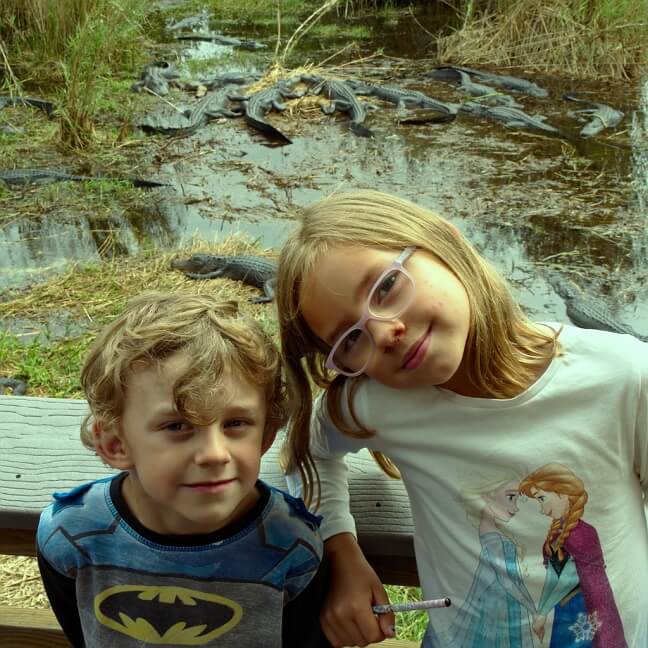
Anhinga Trail by Night
Hands down, one of the most memorable experiences in our travels so far and an absolute can’t miss in Everglades National Park is the Starlight Walk on the Anhinga Trail. Alligators are nocturnal, so all the other alligator tours and boat rides we’ve taken gave us glimpses of sleeping or slow moving alligators during the day. As we walked this trail in the dark, we got a whole new view of alligators, swimming around in the dark. As you shine a flashlight out over the water, dozens of pairs of eyes reflect the light back as small red dots. In some places we watched them swim under the boardwalk where we were standing. The darkness adds an eerie excitement to the experience and the stars shine bright and clear despite some light pollution on the horizon from Miami. It was worth letting the kids stay up late for an experience they’re sure to remember and talk about for years to come.
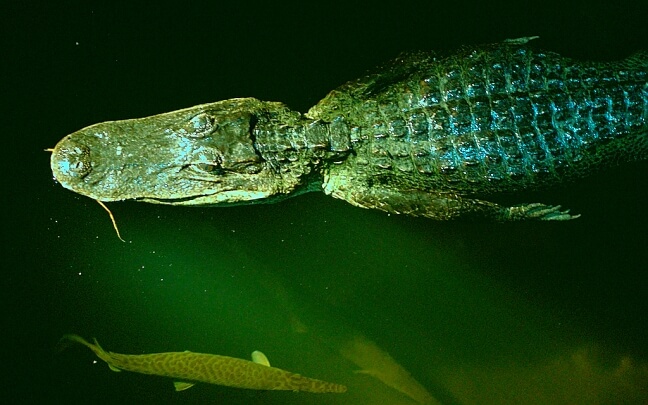
The Starlight Walk is an organized ranger program, but we soon found ourselves leaving the tour group behind and wandering ourselves at our own pace. Because we’d been on the trail during the day, we felt comfortable guiding ourselves, and since it’s a boardwalk trail it’s hard to get lost. Whether or not there’s a ranger program available, don’t miss the Anhinga Trail by night!
Air Boats
One of the few things we knew in advance that we wanted to do in the Everglades was an air boat ride. There are certainly no shortage of air boat tour operators in the area, but there are three that are approved by the National Park Service to operate within the park. We wanted to choose one of these both to help us see more of the national park itself and also because we felt like we were more assured of supporting a business with good environmental practices in this fragile ecosystem.
All of these tour operators are located along the same road in the north part of the park. We chose our provider in a well-researched and structured way: there was a major accident ahead of us that required the road to be closed to land a medevac helicopter. We had passed the first air boat company just before stopping in traffic that they predicted would take at least an hour to clear. We decided we’d rather spend that hour in a boat than in our car, so we turned around and went back to the one we could get to: Coopertown. While I can’t necessarily recommend our method of choosing an operator, we can recommend the company. We were very satisfied with our tour and their staff.

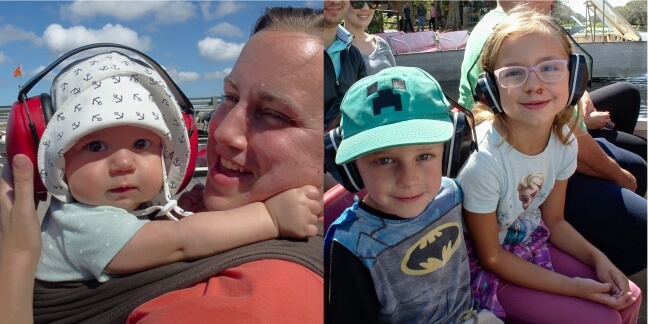
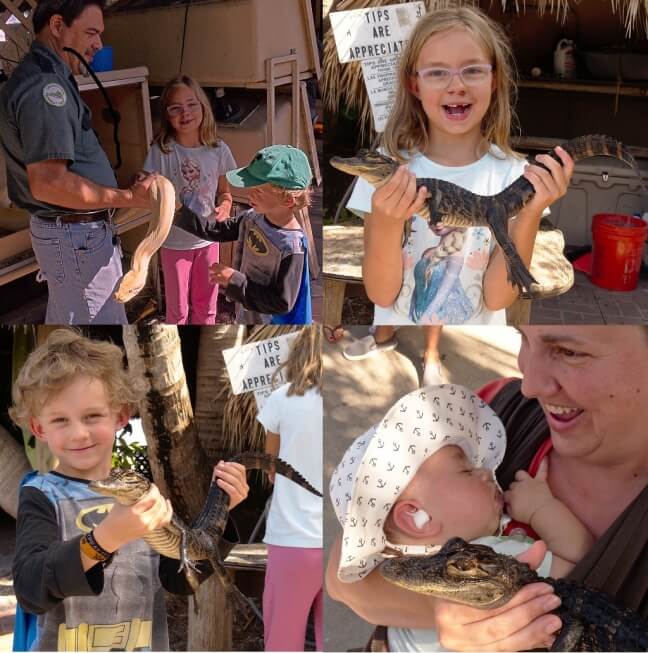
Observation Tower
Just a quick note about the Observation Tower, since we didn’t actually go to it. It may very well be wonderful, but I can’t imagine it was wonderful enough. Cars aren’t allowed past the parking lot, which is 7 miles away from the Observation Tower itself. They offer a tram from the parking lot, the tickets for which would have cost $75 for 2 adults and 2 kids. Seventy-five dollars. Obviously 14 miles round-trip isn’t reasonable for us to walk, especially with kids, but $75 for a tram isn’t reasonable either. Unless you have bikes with you, which we don’t, we’d recommend just skipping that part of the park altogether.
Big Cypress National Preserve
We mostly explored Big Cypress National Preserve by car, driving the Loop Road, and stopping to hike the Tree Snail Hammock Trail along the way. We also spent time at the Oasis Visitor Center working on junior ranger activities.
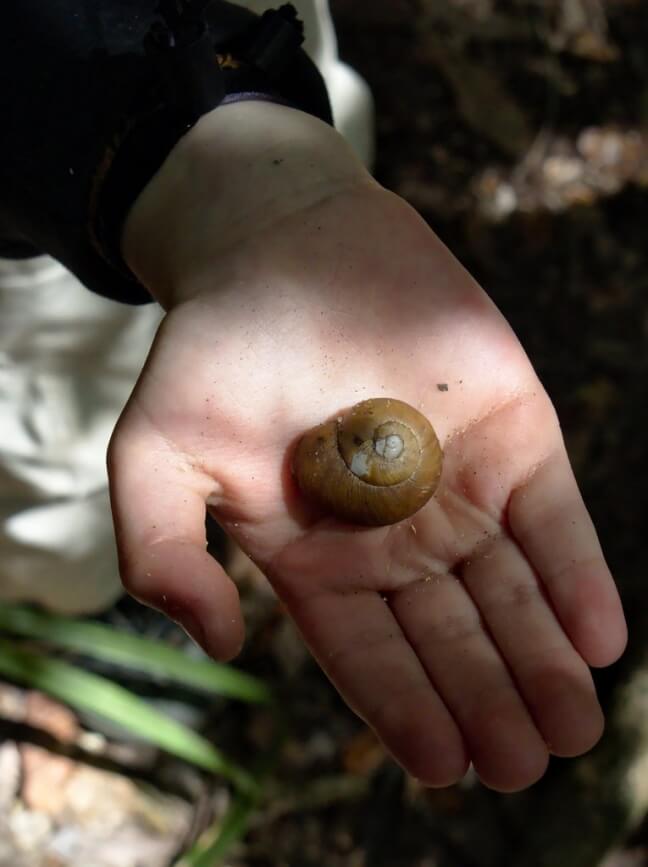
There is a lot more to see and do in Big Cypress than we were able to do. Until we arrived in the area, we hadn’t realized that the most of the northwestern border of Everglades National Park leads directly into Big Cypress National Preserve. So when we explored things to see and do in the Everglades, we didn’t find all that is offered by Big Cypress. Big Cypress also has more options in terms of campgrounds, which might have been a better fit for both location and amenities. If you’re planning a trip to the Everglades, don’t miss the Big Cypress area!
Biscayne National Park
Just to the east of Everglades National Park, along the Atlantic Coast, lies still another national park, Biscayne. We had never heard of this park either but spent a lovely afternoon there.
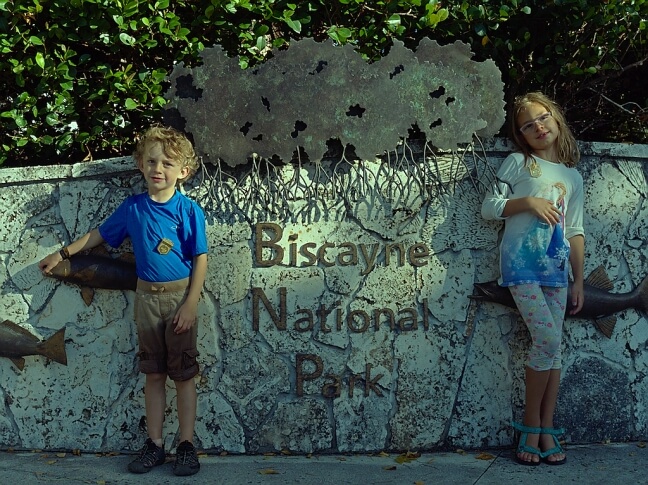
Because it is at the coast, a lot of the activities available involve boating or diving, or taking a boat out to the Keys. The Keys north of Key Largo are all a part of the Biscayne National Park and can only be reached by boat. If we were to return to the area, we would definitely want to plan more time to do this. But, since we had never even heard of Biscayne National Park prior to our visit, we were content to learn more about the area from the beautiful Dante Fascell Visitor Center and take a short walk out onto the jetty at Convoy Point.
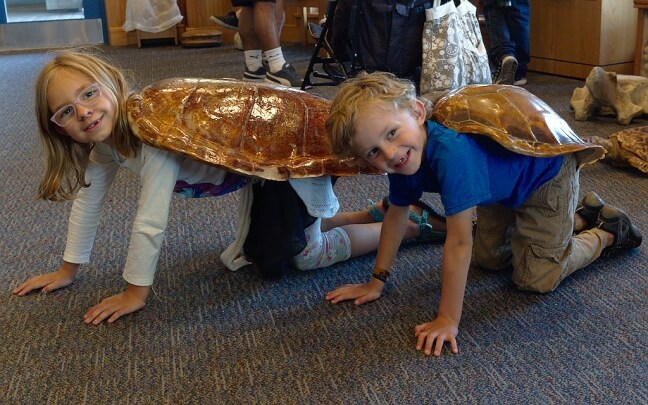


Biscayne National Park has free entry and seemed to be a very popular picnic and fishing spot for local residents. On a beautiful Sunday afternoon, it was really crowded!
Junior Ranger Trifecta
The three parks: Everglades, Biscayne, and Big Cypress, cooperate together on their junior ranger programs. We’ve written before about how much we love the junior ranger programs, so there’s no need to write any more about that now. But really, they’re so great!
Anyway, these three parks share a junior ranger booklet, and each page is marked with one or more “mascot animals” that represent each park. To get a badge from Everglades, for example, you need to do a certain number of activities with Aleesha the Alligator on them. So far, pretty similar to most other parks.
The fun part of the cooperation is that if kids complete the entire booklet and do specific activities in all three parks, they get a special patch in addition to the three junior ranger badges. A patch might not seem like huge motivation to do that much extra work, but our kids’ eyes lit up at the opportunity and we started making plans to spend time in parks that we hadn’t even heard of the day before. Completing the whole booklet was no small feat, especially for a 5 year old, and we’re so proud of how hard they worked and how much they learned!
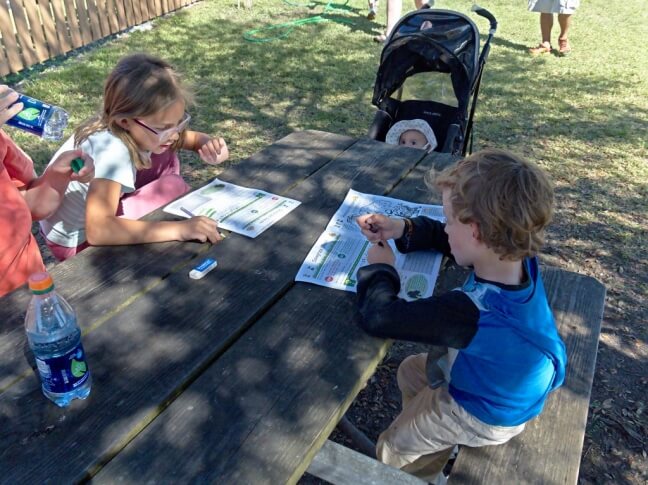

The Everglades region turned out to offer so much more to see and do than we’d realized, even as we were researching and planning it. Once again, we found ourselves wishing we had planned to be there longer. Once again we have reasons to go back. It seems there’s always more to do!
Have you ever been to the Everglades? What were your favorites? What have we missed that we should be sure to do the next time?

Again, you gave a great recommendation that I’m going to add to my list of places to see. I’d already wanted to see the Everglades, but now I know where in that HUGE chunk of land to aim for 🙂
Thanks!
Glad we could give you some ideas of where to start! I remember being overwhelmed and confused when I started planning. Things made more sense once we were down there, but planning ahead is also helpful. As with so many places, we ended up wishing we had planned to stay longer. We want to go back at some point. Don’t forget that when you go is just as important as where – the best time of year is the winter months! By late spring a lot of things are closed down for the summer. Late February worked really well for us.